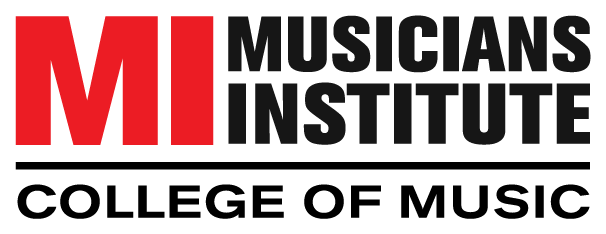Music, an ever-evolving art form, mirrors the cultural, social, and technological shifts of its time. This blog post delves into the evolution of various music genres, exploring their origins, transformations, and how these styles have been integrated into the curriculum of music education institutions like the Musicians Institute. Understanding the evolution of these genres not only enriches one’s musical knowledge but also enhances appreciation and creativity.
The Roots of Rock and Roll
Emerging in the 1950s, rock and roll revolutionized music with its blend of blues, rhythm and blues, and country music. Icons like Elvis Presley and Chuck Berry brought it into the mainstream, capturing the spirit of youth and rebellion. As it evolved, rock branched into sub-genres like punk, characterized by its raw energy and anti-establishment ethos, and heavy metal, known for its loud, distorted guitars and powerful vocals. The 90s saw the rise of alternative rock, diverging from mainstream styles.
In music education, rock and roll is more than just a genre; it’s a cultural phenomenon. Students learn about its historical context, influential artists, and musical characteristics. They explore its impact on society and subsequent genres. Practical sessions might include learning classic rock riffs, studying the structure of rock songs, and even composing in the style, encouraging students to understand and experiment with the genre’s conventions.
The Jazz Age
Jazz, originating in the late 19th and early 20th centuries, is deeply rooted in the African American experience. It started in New Orleans, blending elements of blues, ragtime, and marching band music. Icons like Louis Armstrong and Duke Ellington defined the genre, with its hallmark improvisation and complex rhythms. Jazz evolved through several phases: from the swinging rhythm of the big band era to the intricate harmonies and rhythms of bebop in the 1940s, and the experimental modal jazz of the 1950s and 60s.

Blog Post
"*" indicates required fields
By submitting this form, I authorize Musicians Institute (MI) to make or allow the placement of calls, emails, and texts to me at the phone number that I have provided, including through the use of automated technology, or a prerecorded or artificial voice. I understand that I am not required to provide my phone number as a condition of purchasing any property, goods, or services. I agree to the terms of MI’s Privacy Policy. MI will not sell or rent your information to third parties, and you may unsubscribe at any time.
In music curricula, jazz is often revered as a foundational genre. Students delve into its rich history, learning about the cultural and social contexts that shaped it. Courses cover jazz theory, improvisation techniques, and the study of significant recordings. This comprehensive approach helps students appreciate jazz’s complexity and influence and inspires them to incorporate its elements into their musical repertoire.
Hip-Hop and Cultural Expression
Hip hop emerged in the 1970s from the Bronx, New York, as a potent form of cultural expression among African American and Latino communities. It encompasses not just music, but an entire culture, including rapping, DJing, breakdancing, and graffiti. Pioneers like Grandmaster Flash and The Sugarhill Gang popularized the genre, and by the 1990s, artists like Tupac Shakur and Notorious B.I.G. had brought it to the forefront of mainstream music.
In modern music education, hip-hop is studied for its rhythmic innovation, lyrical content, and cultural significance. Students analyze the genre’s development, its role as a voice for marginalized communities, and its influence on global music and culture. They also learn the technical aspects of hip-hop production, including beat-making, sampling, and lyrical composition, fostering an understanding of the genre’s artistic depth and technical expertise.
The Classical Tradition
Classical music, with roots stretching back to the 11th century, has been a cornerstone of musical tradition. It encompasses a vast period, from the structured compositions of the Baroque era to the emotive works of the Romantic period, and the avant-garde approaches of the 20th century. Composers like Bach, Mozart, and Beethoven are synonymous with the genre, known for their timeless compositions and profound influence on music as a whole.
In classical music education, students explore the extensive history and development of the genre. They study various compositions, learning about different periods, styles, and composers. Courses often focus on music theory, harmony, and composition techniques unique to classical music. This education provides a solid foundation in music, enabling students to appreciate the genre’s complexity and historical significance.
Electronic Music’s Digital Revolution
Electronic music, a product of technological innovation, began to take shape in the late 20th century. It’s characterized by the use of electronic instruments and technology in music production and performance. Pioneers like Kraftwerk introduced the world to the sounds of synthesizers and drum machines, paving the way for sub-genres like techno, house, and trance. Today, electronic music is a dominant force in the music industry, with artists like Daft Punk and Deadmau5 pushing the boundaries of music production and performance.
Music education institutions have adapted to this shift, incorporating electronic music into their curricula. Students learn about the history and evolution of the genre, from its experimental beginnings to its current mainstream status. They gain hands-on experience with electronic music production tools, such as synthesizers, sequencers, and digital audio workstations. This education not only provides technical skills but also encourages innovation and creativity in music production.
Country Music and Storytelling
Country music, emerging from American folk and Western music, tells stories of life, love, and experience. It evolved from the folk traditions of the Appalachian Mountains, incorporating elements of gospel, blues, and even jazz. Artists like Johnny Cash and Dolly Parton popularized the genre, known for its narrative lyrics and distinct twang. Modern country music has expanded to include sub-genres like bluegrass, with a focus on traditional instrumentation, and pop country, blending country elements with mainstream pop music.
In music education, country music is often explored for its storytelling and lyrical content. Students learn about its origins and evolution, analyzing how it reflects American culture and history. Courses may include studying the songwriting techniques of famous country artists, learning to play traditional country instruments, and exploring the genre’s impact on popular music.
Conclusion
The journey through the evolution of music genres reveals a rich tapestry of cultural and artistic expression. Understanding this evolution is crucial for any aspiring musician or music enthusiast. Institutions like the Musicians Institute play a pivotal role in this journey, offering a curriculum that not only teaches the technical aspects of these genres but also instills an appreciation for their historical and cultural contexts. As students explore these varied musical landscapes, they gain a deeper understanding of music’s power and versatility, equipping them to be the next generation of innovators in the ever-changing world of music.

